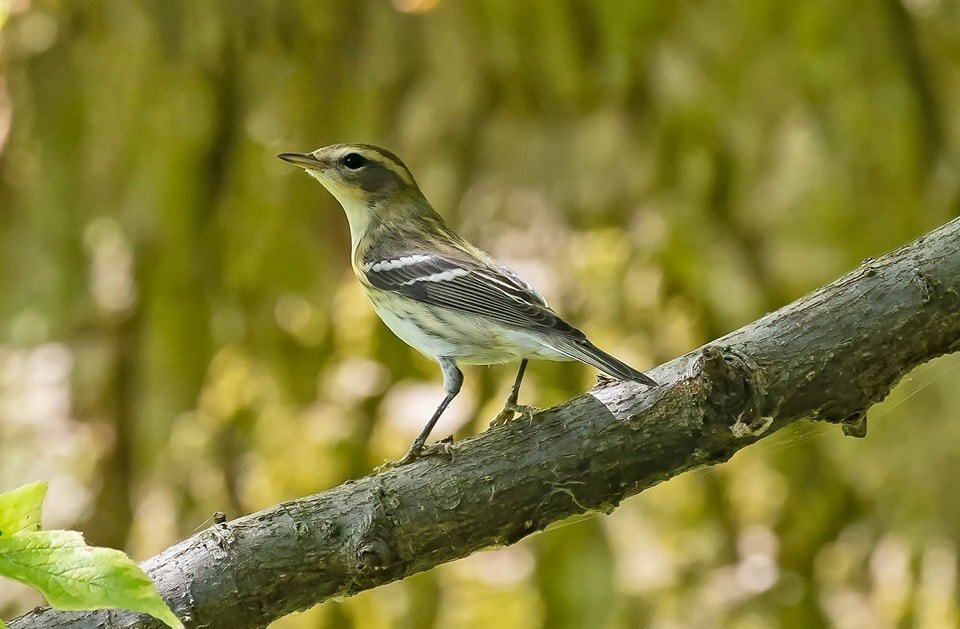|
By Terry Grabill
Fall is an interesting time to be a birder. To me, spring migration is so much easier to get excited about. The process of emerging from the blanket of winter in Michigan is a tremendous rush of fresh and new. Anxious to find what nature has brought north I’m happy to scour the marshes and woodlots in hopes of seeing old friends in their bright breeding plumage and singing all the way. Fall migration is a real thing and brings the breeding birds and young south from their Canadian summer homes. Maybe it’s the lament of the passing summer that makes me less excited to get out in the field. Maybe it’s that these southern migrating warblers are just not the bright jewels dancing in the trees that they were a few short months ago on their journey north. Roger Tory Peterson, the father of modern birding, dedicated whole sections of his field guides to these “confusing fall warblers”. I’d like to think that I don’t value the spring versions more. Perhaps I’m just vain enough to feel better when I’m birding with friends in spring when I can identify most male warblers at a glance and while they’re singing. Fall warblers are often left as “some little warbler” in my notes. I don’t bird with people much in fall…it’s harder to show off! Fall migration, if you can call it that, begins well before the celestial autumnal equinox. Shorebirds start moving south as early as late July. It boggles the mind that these tiny sandpipers and plovers should fly such a distance (often from Southern South America) only to reproduce, get their babies fledged, and turn around in mid-summer. August on the mudflats is a terrific place to see these incredible travelers. By the first of “fall” the shorebirds are well south. Around us, flocks of blackbirds make rivers of black over forests and fields. These are red-winged blackbirds, grackles, brown-headed cowbirds, and starlings. Their cloud-like flocks are often seen to flow in a phenomenon known as a murmuration. Waterfowl (ducks, geese, and swans) also migrate south in fall. Their journey is much later than songbirds. Many only go as far south as is necessary to find open water to feed in. Several species of ducks from the far north winter on our Great Lakes. Winter is a great opportunity to see long-tailed ducks and scoters as well as an occasional eider. Canada geese and mute swans are common after the others have gone to warmer climes. Andrea and I are outside often on fall evenings and will sometimes catch a white cloud of migrating tundra swans barely visible against the dark gray night sky. They mark their passing with a constant whistling through their wings. I’ve only recently paid attention to sounds in the sky at night in late summer and fall. I suppose I’ve never paid attention to it before because I find it an intimidating ID challenge. On quiet evenings in late September and into October, night-migrating songbirds are talking all the way! A few nights ago, while Ann and I were saying goodnight to nature on our porch, we heard a chorus of call notes and chips moving over us. Man, I wish I had any clue what species we were hearing! I just muttered, “Kenn (Kaufman), would be able to ID all those calls”. Kenn is a real-life birding legend that we’ve had the good fortune to bird with in the past. Fall is a special time for birds. Along with Spring migration, it’s a time that reminds me that these little travelers are a group of animals that truly connects our world. They’re not bound by political or geographical boundaries. It’s humbling to watch these tiny creatures and imagine the things they’ve seen and the trials they’ve faced. I think I like fall birding more than I knew. For BirdGoober.com, I’m Terry Grabill
1 Comment
|
Archives
April 2024
Categories |

 RSS Feed
RSS Feed